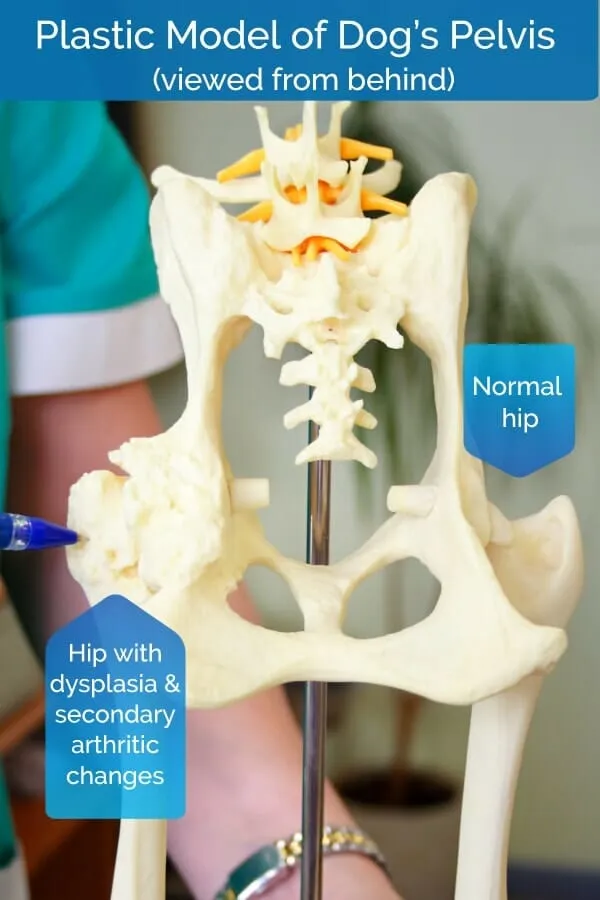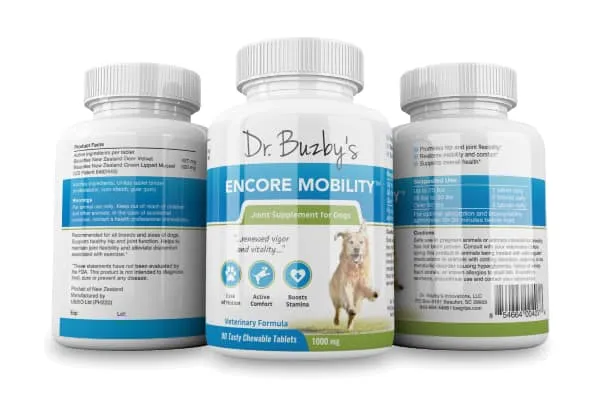Hip pain in dogs, often stemming from conditions like hip dysplasia, can significantly impact their quality of life. While surgery might be an option for some, conservative management using various medicines and therapies is frequently the most effective approach for many canine companions. This guide explores the Best Medicine For Hip Pain In Dogs, offering insights from veterinary experts and practical advice for concerned pet owners. Understanding the causes, symptoms, and a range of treatment options is crucial for ensuring your dog lives a comfortable and active life.
Understanding Hip Pain in Dogs
Canine hip dysplasia (CHD) is a prevalent inherited disorder characterized by a malformation of the hip joint. In a healthy dog, the “ball” (femoral head) fits snugly into the “socket” (acetabulum). In dogs with hip dysplasia, this fit is compromised, leading to joint laxity, instability, and eventually, arthritis and pain.
Recognizing the Signs of Hip Pain
The clinical signs of hip pain can vary, often appearing subtly in younger dogs or becoming more pronounced as arthritis develops. Common indicators include:
- “Bunny-hopping” gait: The hind legs move together in a hopping motion.
- Difficulty rising: Especially after periods of rest.
- Stiffness: Noticeable after lying down for extended periods.
- Reduced rear limb muscle mass: A visible thinning of the muscles in the hindquarters.
- Weight shifting: Favoring the front legs to alleviate pressure on the hips.
- Limping: This can be intermittent and may switch between legs.
- Reluctance to engage in activities: Such as running, jumping, or climbing stairs.
A veterinarian will diagnose hip dysplasia through a physical examination, assessment of clinical signs, and often, X-rays. These diagnostic tools help visualize the joint’s structure and confirm the extent of the condition.
 Plastic model of a dog showing normal vs. dysplastic hips
Plastic model of a dog showing normal vs. dysplastic hips
Treatment Options for Canine Hip Pain
The goal of treating hip pain in dogs is to manage inflammation and alleviate discomfort, thereby improving mobility and overall well-being. While surgical interventions exist, the focus for many dogs is on conservative management, which includes a variety of medications and therapies.
1. Weight Management: The Foundation of Hip Pain Relief
Perhaps the most impactful non-medicinal approach to managing hip pain is maintaining a healthy weight. Excess pounds place significant stress on the hip joints, exacerbating pain and inflammation. Fatty tissue also produces inflammatory hormones, worsening conditions like osteoarthritis. Your veterinarian can help you determine your dog’s ideal body condition score and create a tailored weight management plan.
2. Nonsteroidal Anti-Inflammatory Drugs (NSAIDs)
NSAIDs are a cornerstone of medical management for hip pain in dogs, offering potent relief from inflammation and pain. Commonly prescribed NSAIDs for dogs include:
- Carprofen
- Meloxicam
- Firocoxib
- Deracoxib
- Grapiprant
These medications work by inhibiting inflammatory pathways. While generally safe when used under veterinary guidance, regular bloodwork may be recommended to monitor organ function, especially with long-term use.
3. Multi-Modal Pain Management
For dogs still experiencing pain despite NSAID use, veterinarians often employ multi-modal pain management. This strategy involves using a combination of medications and therapies to target pain signals at different points in the body—from the hips to the spinal cord and brain. Medications that may be incorporated include:
- Gabapentin: This medication helps by calming overactive neurons, reducing the transmission of pain signals. It’s a widely used option for chronic pain conditions in dogs.
- Amantadine: Originally an antiviral medication, amantadine has been found to help manage arthritis pain by increasing dopamine levels in the brain, leading to improved comfort and mobility. Studies have shown enhanced pain relief when combined with NSAIDs.
- Tramadol: While current research suggests tramadol alone may not be sufficient for severe arthritis pain, it can be a valuable adjunct to other pain medications. It may help by influencing serotonin levels and having mild opiate receptor effects.
4. Joint Health Supplements and Nutraceuticals
Oral joint supplements, often referred to as nutraceuticals, are frequently recommended for dogs with hip pain. While research on their efficacy is ongoing, many ingredients are well-tolerated and may offer benefits. Common components include:
- Glucosamine and Chondroitin: These are building blocks for cartilage and are thought to support joint health.
- MSM (Methylsulfonylmethane): Known for its anti-inflammatory properties.
- Avocado/Soybean Unsaponifiables (ASU): May help protect cartilage.
- Herbal extracts: Such as turmeric/curcumin, bromelain, boswellia, corydalis, and devil’s claw.
- New Zealand Deer Velvet: Often cited for its potential to support tissue and cartilage health.
- Green-lipped mussel: Another ingredient known for its anti-inflammatory and joint-supporting properties.
It’s crucial to note that joint supplements are not regulated by the FDA, meaning product quality and ingredient accuracy can vary significantly. Always consult your veterinarian before choosing a supplement for your dog.
 Three bottles of a dog joint supplement
Three bottles of a dog joint supplement
5. Omega-3 Fatty Acids
Rich in EPA and DHA, omega-3 fatty acids are powerful anti-inflammatories that can benefit dogs with stiff, painful joints. They are generally safe and offer numerous health advantages, making them a valuable addition to a hip pain management plan.
6. Adequan Injections
Adequan Canine is a prescription medication containing polysulfated glycosaminoglycan (PSGAG). It works similarly to oral joint supplements by supporting cartilage health but is administered via intramuscular injection, allowing for better penetration and absorption. Many owners report significant improvements in their dogs’ mobility after Adequan treatment.
7. Appropriate, Gentle Exercise
Consistent, gentle exercise is vital for maintaining musculoskeletal health. Studies suggest that appropriate exercise, rather than strict rest, is linked to lower lameness scores in dogs with hip dysplasia. Canine rehabilitation practitioners can design tailored exercise programs, sometimes incorporating therapies like underwater treadmills, to improve strength and mobility safely.
8. Acupuncture and Laser Therapy
Alternative therapies like acupuncture and laser therapy have demonstrated considerable success in managing hip pain in dogs. Acupuncture can stimulate the release of endorphins, the body’s natural painkillers, and relax surrounding muscles. Laser therapy uses light to increase blood flow and promote healing in the affected tissues. These modalities can be used individually or in combination for synergistic effects.
9. CBD Oil for Dogs
The use of CBD (cannabidiol) oil for dogs with hip pain is an area of growing interest. CBD is thought to interact with receptors that reduce pain and inflammation without producing the psychoactive effects associated with THC. While early research is promising, veterinarians often operate in a legal “grey area” when recommending CBD, and its regulation is limited. Always consult your veterinarian before administering CBD oil to your dog.
10. ToeGrips® Dog Nail Grips
For dogs struggling with mobility on slippery floors, ToeGrips® offer a practical solution. These non-slip grips fit over the dog’s toenails, providing enhanced traction and stability on surfaces like hardwood and tile. This can significantly improve a dog’s confidence and ability to rise and walk, reducing the risk of falls and further injury.
 Labrador Retriever wearing ToeGrips
Labrador Retriever wearing ToeGrips
Conclusion: A Holistic Approach to Hip Pain Management
Effectively managing hip pain in dogs often involves a multimodal approach, combining various medications and therapies tailored to the individual dog’s needs. While there isn’t a single “best medicine” for every case, a combination of weight management, appropriate veterinary-prescribed medications, joint supplements, and complementary therapies can lead to significant improvements in comfort and quality of life. Close collaboration with your veterinarian is paramount to developing the most effective treatment plan for your beloved canine companion.
References
- Journal of Small Animal Practice
- Orthopedic Foundation for Animals (OFA)
- American College of Veterinary Surgeons (ACVS)
- American Association of Rehabilitation Veterinarians
